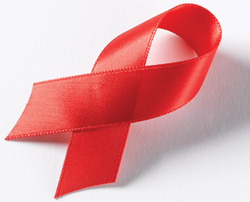World AIDS Day: Advocates highlight challenges and urge governments to increase the fight against HIV/AIDS
 More than 25 million men, women and children have died around the worldfrom HIV/AIDS since 1981. Some 20 years after the first World AIDS dayshone a spotlight on the virus, some 33 million people are living withHIV, the virus that causes AIDS, according to the World Bank.
More than 25 million men, women and children have died around the worldfrom HIV/AIDS since 1981. Some 20 years after the first World AIDS dayshone a spotlight on the virus, some 33 million people are living withHIV, the virus that causes AIDS, according to the World Bank.Today, Dec. 1st, is World AIDS Day and across the world, and here inthe Southern United States, we take the moment to remember how far wehave come and how far we have left to go to fight the epidemic.
Organizers of World AIDS Day -- built around the themes of leadership,self-responsibility and activism -- are calling on governments tofollow through on promises of universal treatment, prevention, care andsupport, reportsthe AFP. Developing countries and impoverished people across the worldstill lack access to affordable and effective HIV/AIDS treatment. Lastweek UNAIDS released a reporturging countries to adopt flexible policies that reflect how and whythe latest HIV infections are transmitted. The report also recommendstargeting the highest-risk populations, such as injection drug usersand men who have sex with men.
Advocates argue that the advice given to countries around the world isadvice we also need to adhere to here in the United States. In theUnited States HIV/AIDS has become a Southern epidemic and one that iscontinually rising in minority communities.
As Facing South has previously reported,the epidemic among African-Americans in some parts of the United Statesis as severe as in parts of Africa. AIDS is the leading cause of deathamong black women between ages 25 and 34. In the South, more adults andyouth live with and die from AIDS than elsewhere in the nation,creating a health disaster in the region. The South not only leads thenation in AIDS cases and rates in cities of all sizes, but more thanhalf of the African-Americans living with AIDS and more than half ofthe new AIDS cases reported among blacks occurred in the South.
Kate Whetton, director of Duke Global Health Institute's Center for Health Policy, has studied infectious diseases in both the Deep South and in impoverished communities around the world and concluded that there are many more similarities than differences in these communities when it comes to diseases like HIV /AIDS. Listen to her audio interview with North Carolina Public Radio here.
Yet, while the epidemic continues to grow in the DeepSouth, federal funding has not followed and has instead been channeledto wealthier parts of the nation with fewer cases and death rates. TheSouthern AIDS Coalition, a nonprofit partnership of government andprivate-sector programs based in Birmingham, has reported that there isa lack adequate federal response and funding in dealing with thegrowing crisis of HIV/AIDS in communities ofcolor and in the South, and calls for a "fundamental rethinking of AIDS policy."
The Black AIDS Institute is also calling for better domestic policiesin the United States and for international agencies to hold the U.S.government accountable for failure to address HIV/AIDS epidemic in itsown country.
BET.com News reports:
While AIDS remains the world's No. 1 health threat, in the UnitedStates it poses a particular grave risk to Black Americans. As PhillWilson, executive director of the Black AIDS Institute, puts it, "AIDSin America is a Black disease...about half of the just over 1 millionAmericans living with HIV or AIDS are Black."
The Institute is asking the Obama administration to set up the sametype of domestic funding program for HIV/AIDS prevention, treatment andresearch programs in America as President Bush did through thePresident's Emergency Fund for AIDS Relief (PEPFAR) in internationalcommunities
